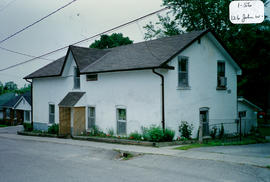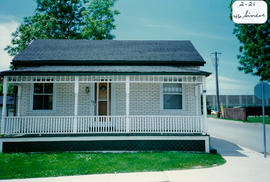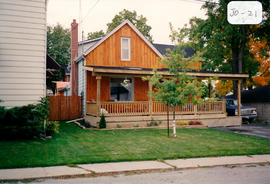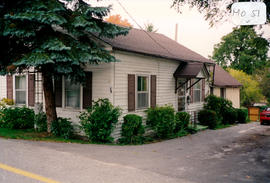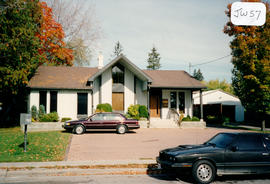- CA BWGPL GJ-HB-2017-04-24-03
- Item
- 1996
Part of George Jackson fonds
The mid-block building located on the west side at 150 Toronto St. (on the corner of Toronto and Queen Streets) was built around 1890-1910 in the Gothic Revival style. The 1½-storey, original farmhouse has a recent, two-storey addition, a simple rectangular form and a medium-pitched, gable roof. The original brick masonry construction was totally reclad with new brick veneer in the 1980’s. Replacement windows and doors may, or may not, be the original size and/or at the original locations. A new, parged-block foundation covers the existing stone foundation. According to the 2000 inventory, little of the original building is apparent apart from the form. It also notes that the new, brick cladding with dichromatic quoining, belt course, and window heads are not a convincing replication of the old-style detailing. The side-wing addition was thought to relate minimally to the main house. (1, 3)
George Jackson



